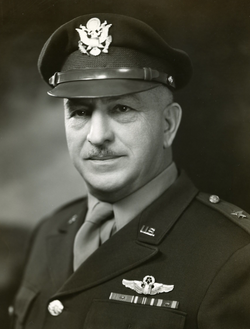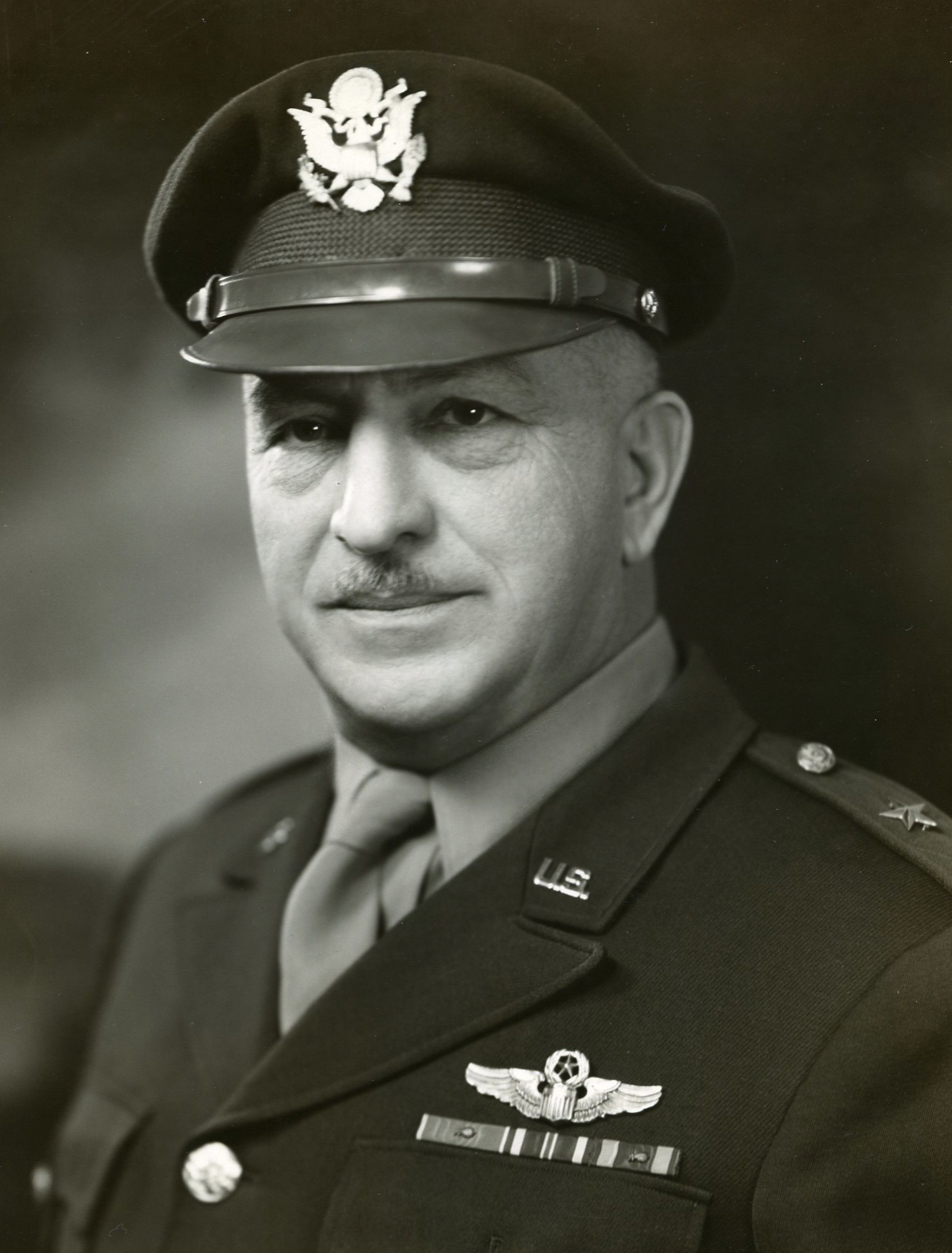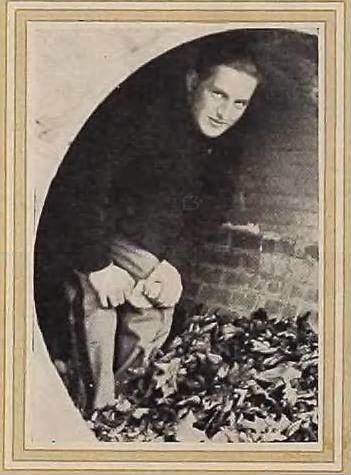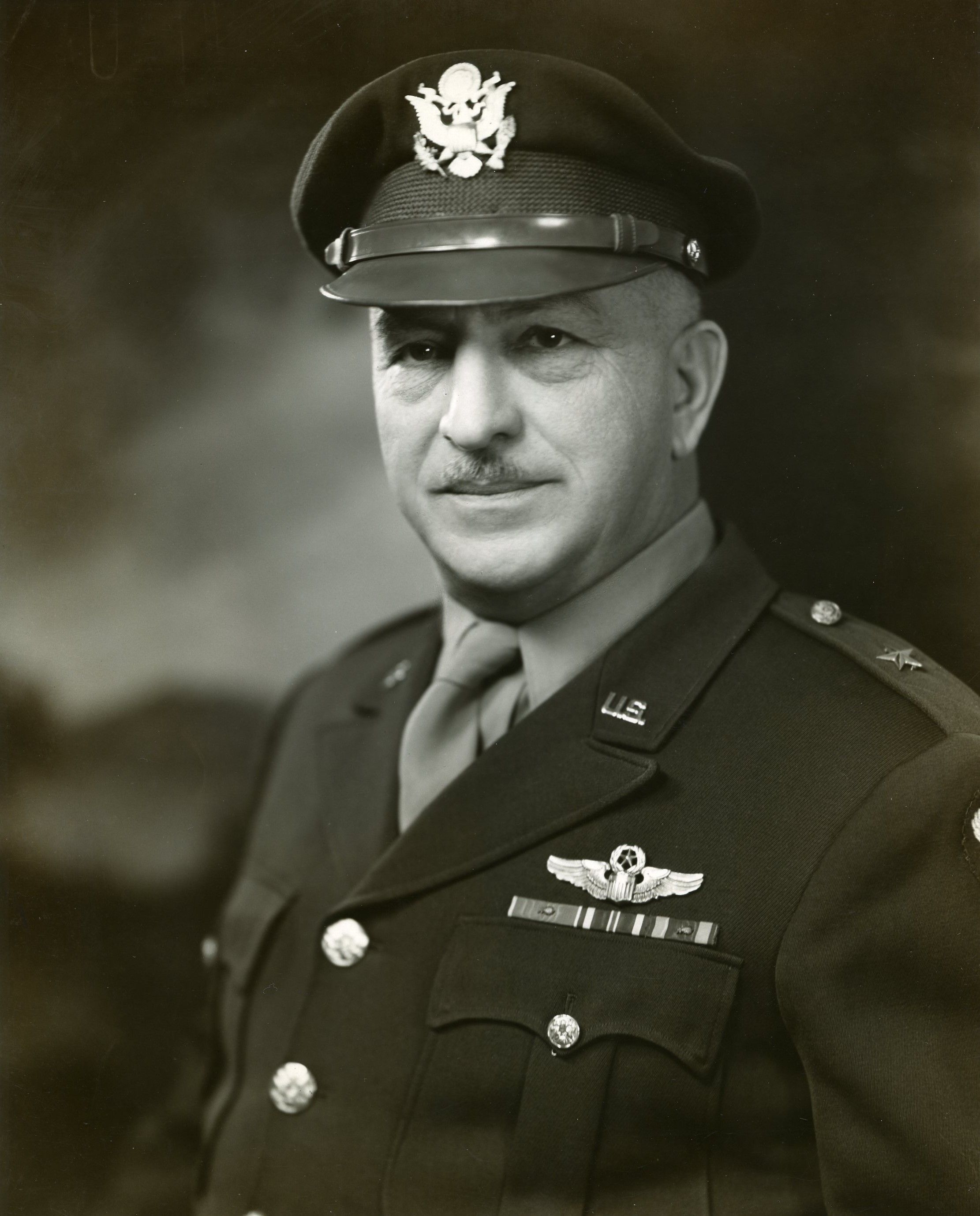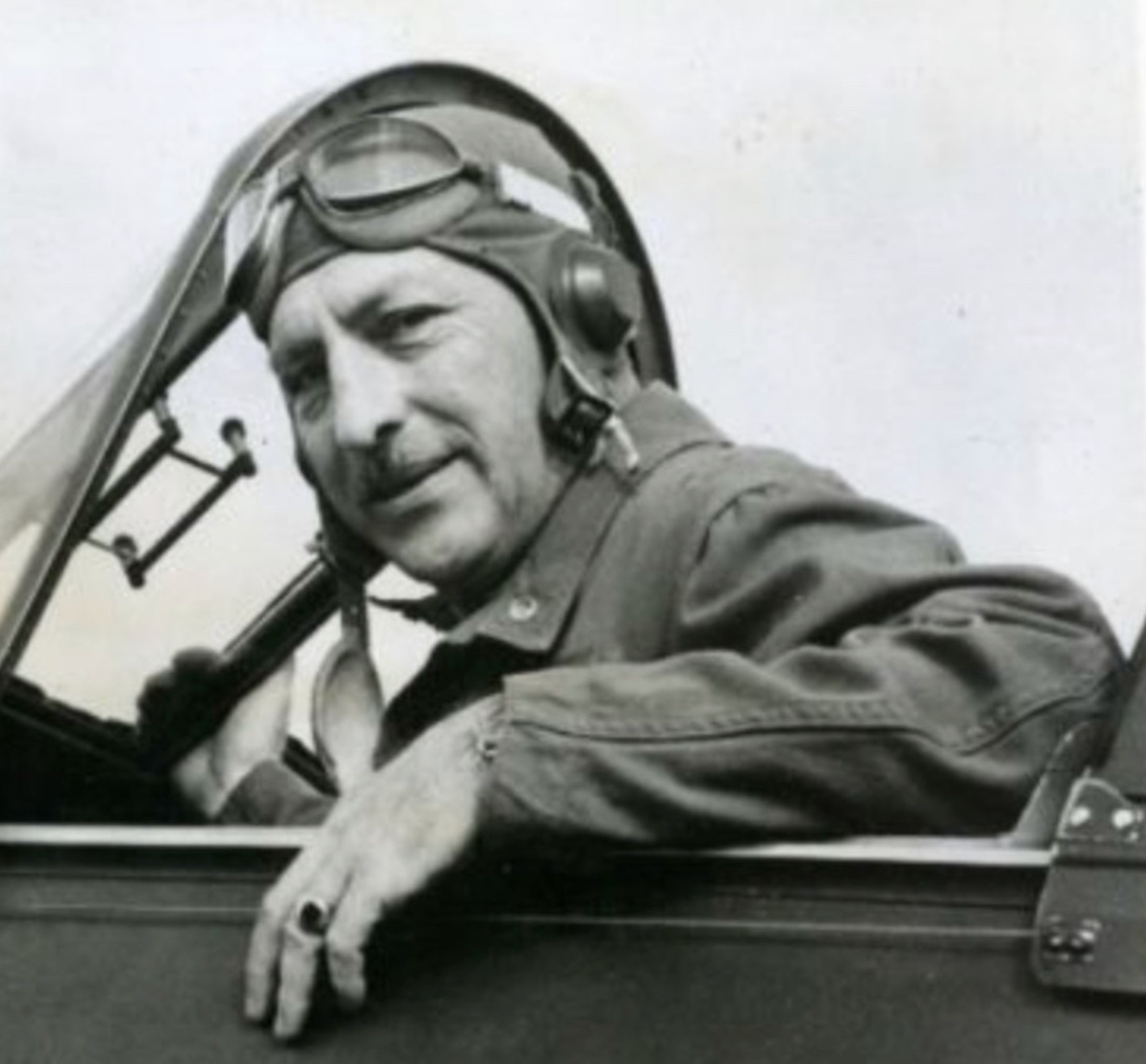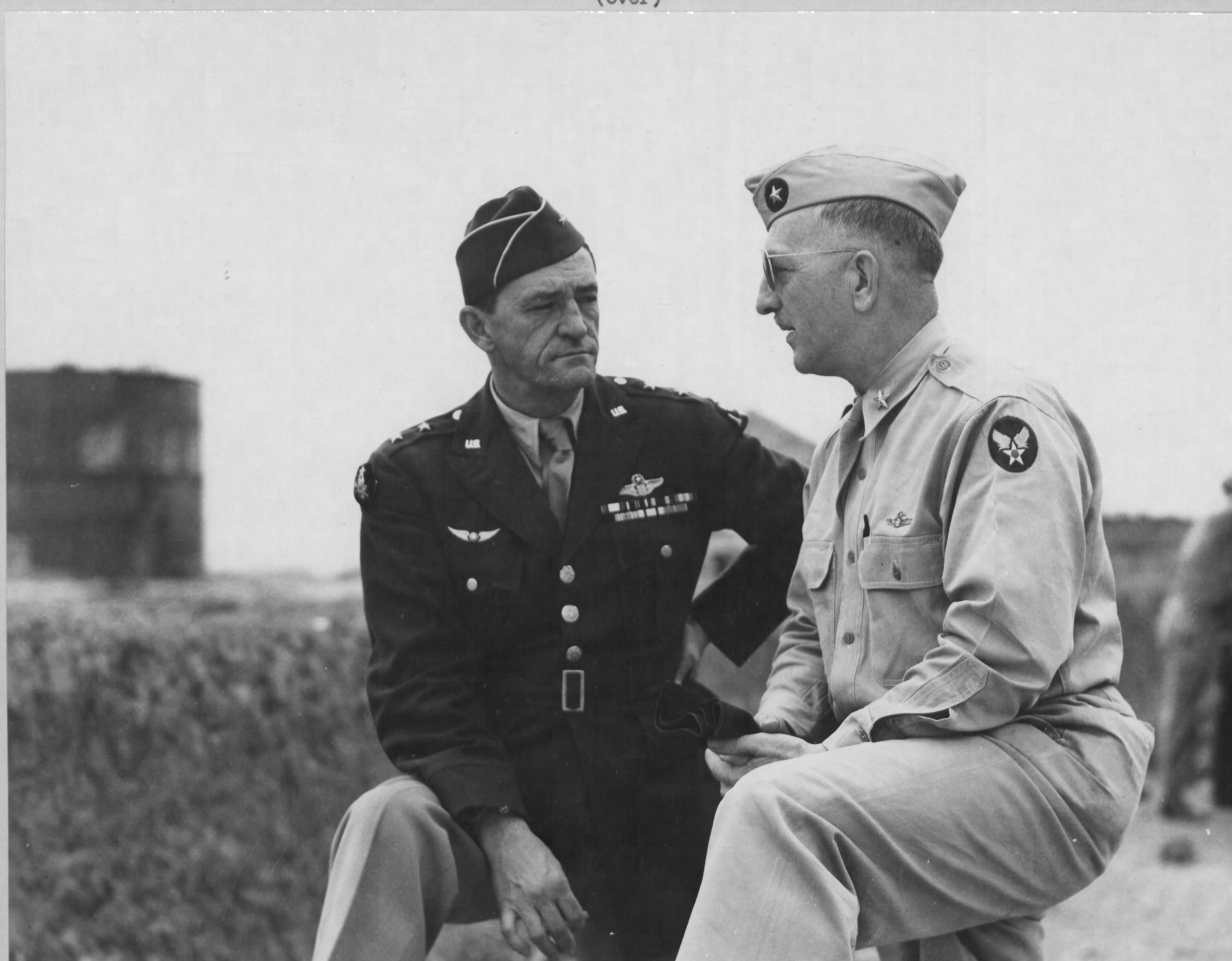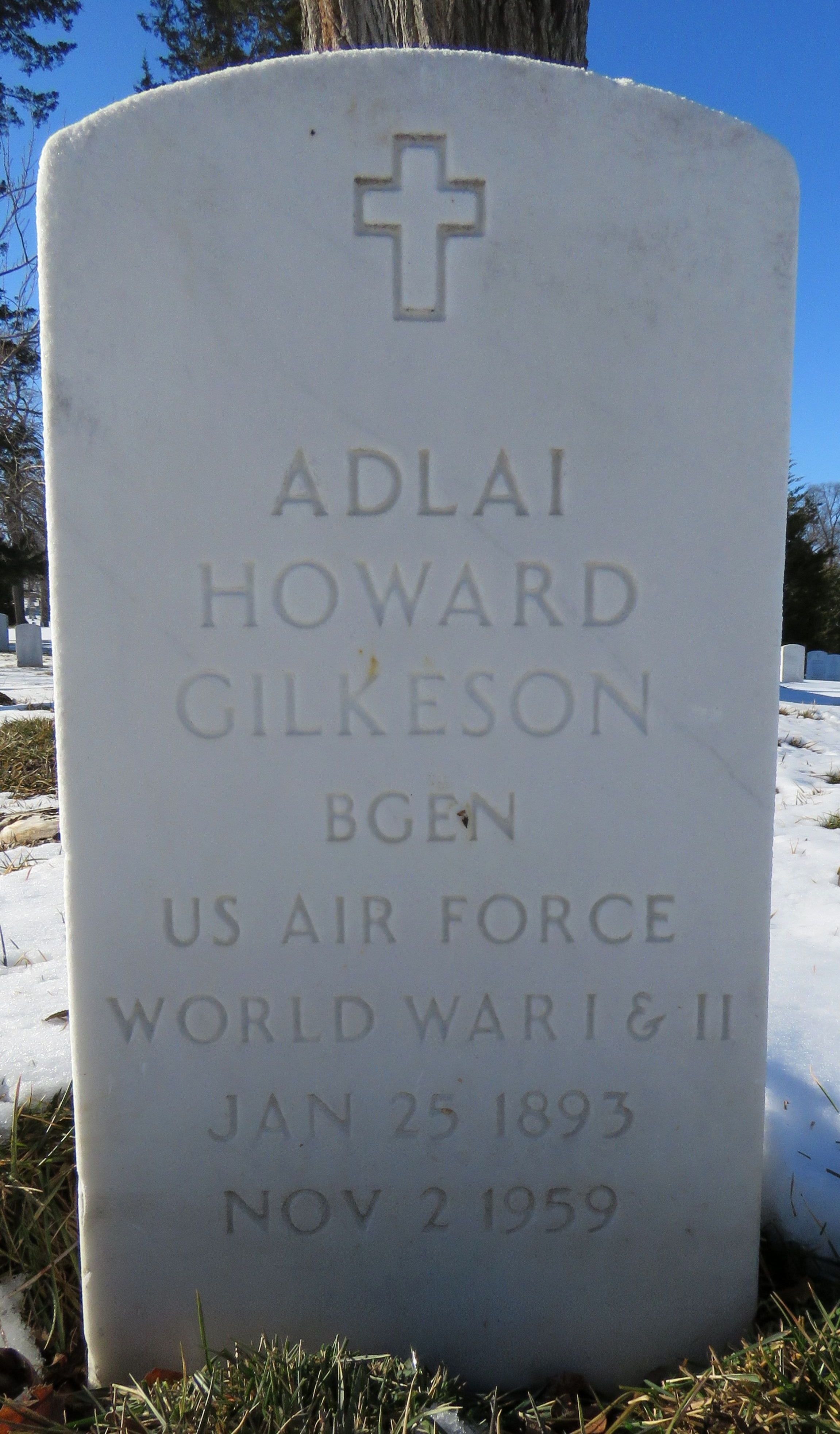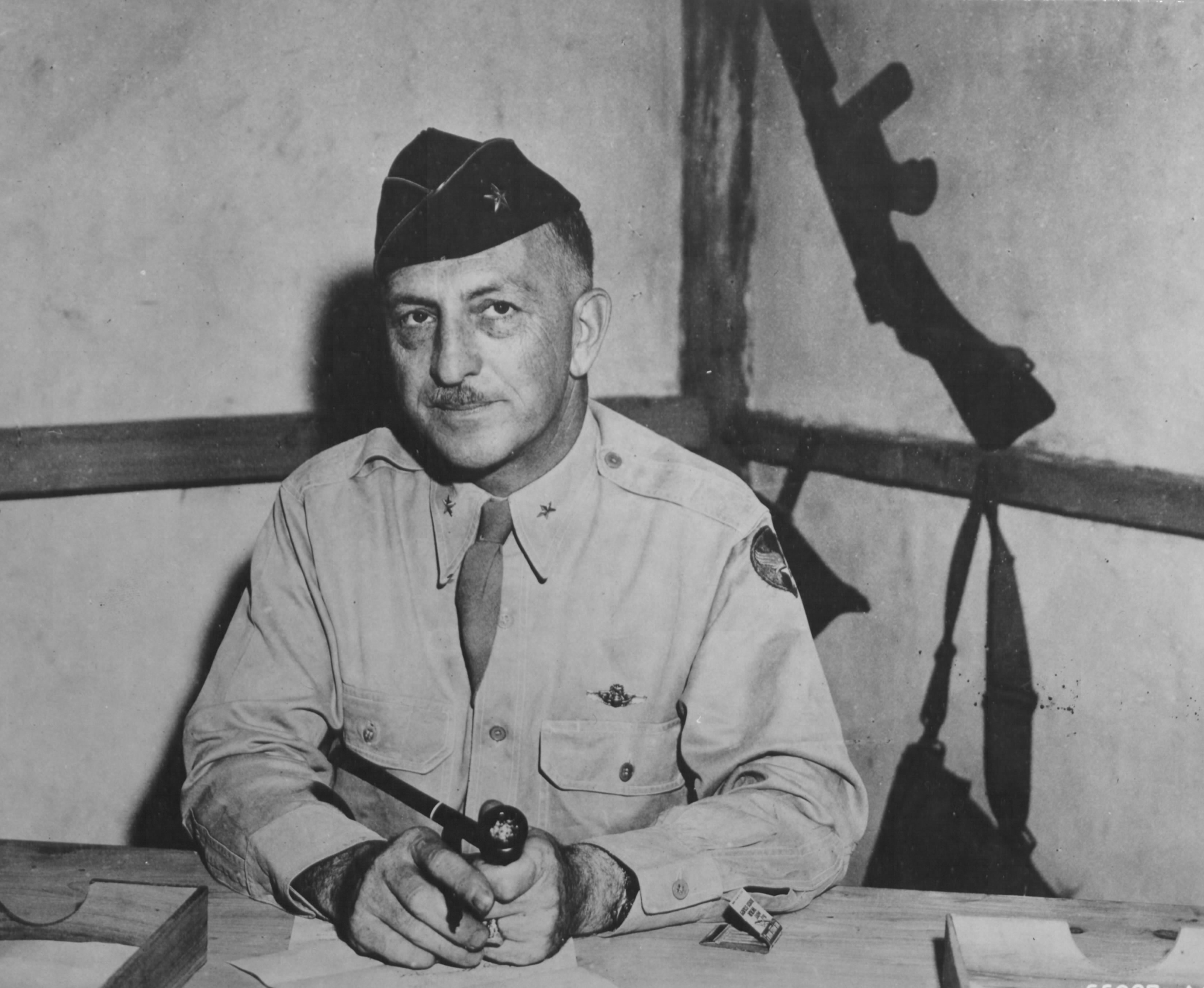Brigadier General, U.S. Air Force
Adlai Howard Gilkeson was born on 25 January 1893 in Lansdale, PA.
Gilkeson attended the U.S. Military Academy and graduated with the class of 1915, which became known as ""The Class the Stars Fell On." His class rank was 137 in a class of 164. He was commissioned as a Second Lieutenant of Infantry on 12 June 1915.
Second Lieutenant Gilkeson's first assignment was to the 11th Infantry Regiment at Douglas, AZ, where he served from September 1915 to September 1916. Attached to the Aviation Section, Signal Corps, 1LT Gilkeson completed his flying training at the Signal Corps Aviation School in San Diego, CA, in May 1917. He was promoted to Captain and then assigned to the 1st Aero Squadron at Columbus, NM, where he received the rating of Junior Military Aviator on 20 June 1917. From July to September 1917, he was Commandant of the School of Military Aeronautics, Princeton University, NJ, and from September 1917 to January 1918, his duty assignment was at Chanute Field, IL. He served as Engineer Officer at Rich Field, TX, until April 1918 and then as Officer in Charge of Flying at Wilbur Wright Field, OH, to August 1918. Now a Major (temporary), he returned to Chanute Field and remained there until January 1919. After being transferred to Aberdeen Proving Ground, MD, Gilkeson commanded the 217th Aero Squadron until April 1919.
Gilkeson then served at Hazelhurst Field, NY, until October 1919, when he joined the 60th Infantry Regiment at Camp Gordon, GA, and served until August 1920. (He reverted to his permanent rank of captain on 20 February 1920 and was transferred to the Air Service on 1 July 1920.) He was promoted to Major (permanent) on 28 July 1920. Major Gilkeson then served as Executive Officer at Carlstrom Field, FL, until July 1921 and, prior to sailing for duty in the Philippines, served just over a month at Crissy Field, CA. After completing a two-year tour of duty as Commanding Officer of Clark Field and the 3rd Pursuit Squadron, in the Philippines, he returned to the U.S. and was assigned to duty as Professor of Military Science and Tactics at the Massachusetts Institute of Technology in Cambridge.
From September-November 1925, he was a student at the Chemical Warfare School, Edgewood Arsenal, MD, and then remained on duty there as Air Corps Liaison Officer until June 1928. He was then assigned as a student at the Air Corps Engineering School at Wright Field, OH, and graduated in July 1929. After graduation, he remained at Wright Field as Chief of the Equipment Branch, Air Corps Materiel Division, until September 1931.
In June 1932, following his graduation from the Air Corps Tactical School at Maxwell Field, AL, he was assigned to duty with the 1st Pursuit Group at Selfridge Field, MI, as Executive Officer and Officer in Charge of Flying. While assigned to this station, he had duty with the Civilian Conservation Corps for 13 months.
From November 1934 to March 1935, he served at Fort Sam Houston, TX, with the Organized Reserves, 8th Corps Area. On 2 March 1935 Gilkeson was promoted to Lieutenant Colonel (temporary), and became Commander of the 8th Pursuit Group at Langley Field, VA. (He was promoted to Lieutenant Colonel (permanent) on 24 December 1936.) He was detailed to the Command and General Staff School at Fort Leavenworth, KS, in September 1938 and graduated in June 1939. He was then assigned to Albrook Field, Panama Canal Zone, in command of an air base, and later, as a Colonel (temporary) also assumed command of the 12th Pursuit Wing.
On 17 February 1942, Gilkeson was promoted to Brigadier General and in March was named Commanding General, 26th Interceptor Command, Albrook Field, and in October 1942, he became Commanding General of the III Fighter Command in Florida. In March 1944, he was assigned to the China-Burma-India Theater with station at Chengtu, China, in command of the 312th Fighter Wing. This organization was charged with the task of protection of the U.S. air bases used by our long-range bombardment airplanes in their raids on Japanese targets in Japan and Manchuria. Fighter raids on Japanese installations in China were conducted whenever meager gasoline supplies would permit.
In October 1944, BG Gilkeson was transferred to the 10th Air Force, operating in Burma, where he served as Assistant Chief of Staff for Operations and Training (A-3). In May 1945, he became Deputy Commanding General China-Burma Theater, and was in charge of all air operations committed to the task of driving the Japanese out of North Burma and paving the way for the construction of the Ledo Road into China. The tasks of the 10th Air Force were many and diversified, including close-in fighter-bomber support for American, English and Chinese ground troops fighting in dense jungles; supply by air of food and ammunition to troops cut off from normal ground supply channels; supply of engineer troops engaged in building the Ledo Road; transport of Chinese troops from and to China; and transport of gasoline and other supplies to the 14th Air Force in China. From October 1945 to October 1946, he was Deputy Commanding General China-Burma Theater.
Following the end of World War II, BG Gilkeson served as: Member of the Officer Selection Committee at Headquarters US Army Air Forces from November 1946 to July 1947; Deputy to the Air Inspector, Headquarters US Air Force from July 1947 to January 1948; Air Inspector, Headquarters US Air Force (now Air Force Office of Special Investigations) from January 1948 to October 1949; Commanding General 19th Bombardment Wing from November 1949 to June 1951; and then as Commanding General, Ogden Air Material Area from 29 June 1951 to his retirement from the Air Force later that year.
Medals, Awards and Badges
Legion of Merit with Bronze Oak Leaf Cluster
Distinguished Flying Cross
Air Medal with Bronze Oak Leaf Cluster
American Defense Service Medal
American Campaign Medal
Asiatic-Pacific Campaign Medal
World War II Victory Medal
Command Pilot Badge
Aircraft Observer Badge
Combat Observer Badge
Excerpt from Legion of Merit Citation (2nd Award)
He performed outstanding service from October 1942 to March 1944. As Commanding General of the 3rd Fighter Command, through his professional attainments and leadership, he instituted and developed a fighter pilot training program that attained efficient and effective results. He increased the flying time per airplane and the production of pilots, and at the same time reduced the accident rate from 4.53 to 1.4 per 1,000 flying hours. His efficient system of processing fighter units and crews for overseas service resulted in a minimum of rejections or delay at the Port of Embarkation.
Honors
Gilkeson Field, named for Brigadier General Adlai Howard Gilkeson, at Andersen Air Force base, Guam, was constructed around 1947 and served as the home of the North Field Bombers, the base football team. Andersen Air Force Base was actually North Field Air Force Base until 7 October 1949, when it was named after Brigadier General James R. Andersen, who perished in the Pacific Ocean during a flight from Kwajalein to Hawaii during World War II. BG Gilkeson himself gave the dedication speech at the base re-naming.
Death and Burial
Brigadier General Adlai Howard Gilkeson died on 2 November 1959. He is buried at Arlington National Cemetery in Arlington, VA, in Section 34, Site 35-A.
(Information via U.S. Air Force, U.S. Military History Institute at Carlisle Barracks, and Military Hall of Honor/http://www.militaryhallofhonor.com/honoree-record.php?id=306980
Brigadier General, U.S. Air Force
Adlai Howard Gilkeson was born on 25 January 1893 in Lansdale, PA.
Gilkeson attended the U.S. Military Academy and graduated with the class of 1915, which became known as ""The Class the Stars Fell On." His class rank was 137 in a class of 164. He was commissioned as a Second Lieutenant of Infantry on 12 June 1915.
Second Lieutenant Gilkeson's first assignment was to the 11th Infantry Regiment at Douglas, AZ, where he served from September 1915 to September 1916. Attached to the Aviation Section, Signal Corps, 1LT Gilkeson completed his flying training at the Signal Corps Aviation School in San Diego, CA, in May 1917. He was promoted to Captain and then assigned to the 1st Aero Squadron at Columbus, NM, where he received the rating of Junior Military Aviator on 20 June 1917. From July to September 1917, he was Commandant of the School of Military Aeronautics, Princeton University, NJ, and from September 1917 to January 1918, his duty assignment was at Chanute Field, IL. He served as Engineer Officer at Rich Field, TX, until April 1918 and then as Officer in Charge of Flying at Wilbur Wright Field, OH, to August 1918. Now a Major (temporary), he returned to Chanute Field and remained there until January 1919. After being transferred to Aberdeen Proving Ground, MD, Gilkeson commanded the 217th Aero Squadron until April 1919.
Gilkeson then served at Hazelhurst Field, NY, until October 1919, when he joined the 60th Infantry Regiment at Camp Gordon, GA, and served until August 1920. (He reverted to his permanent rank of captain on 20 February 1920 and was transferred to the Air Service on 1 July 1920.) He was promoted to Major (permanent) on 28 July 1920. Major Gilkeson then served as Executive Officer at Carlstrom Field, FL, until July 1921 and, prior to sailing for duty in the Philippines, served just over a month at Crissy Field, CA. After completing a two-year tour of duty as Commanding Officer of Clark Field and the 3rd Pursuit Squadron, in the Philippines, he returned to the U.S. and was assigned to duty as Professor of Military Science and Tactics at the Massachusetts Institute of Technology in Cambridge.
From September-November 1925, he was a student at the Chemical Warfare School, Edgewood Arsenal, MD, and then remained on duty there as Air Corps Liaison Officer until June 1928. He was then assigned as a student at the Air Corps Engineering School at Wright Field, OH, and graduated in July 1929. After graduation, he remained at Wright Field as Chief of the Equipment Branch, Air Corps Materiel Division, until September 1931.
In June 1932, following his graduation from the Air Corps Tactical School at Maxwell Field, AL, he was assigned to duty with the 1st Pursuit Group at Selfridge Field, MI, as Executive Officer and Officer in Charge of Flying. While assigned to this station, he had duty with the Civilian Conservation Corps for 13 months.
From November 1934 to March 1935, he served at Fort Sam Houston, TX, with the Organized Reserves, 8th Corps Area. On 2 March 1935 Gilkeson was promoted to Lieutenant Colonel (temporary), and became Commander of the 8th Pursuit Group at Langley Field, VA. (He was promoted to Lieutenant Colonel (permanent) on 24 December 1936.) He was detailed to the Command and General Staff School at Fort Leavenworth, KS, in September 1938 and graduated in June 1939. He was then assigned to Albrook Field, Panama Canal Zone, in command of an air base, and later, as a Colonel (temporary) also assumed command of the 12th Pursuit Wing.
On 17 February 1942, Gilkeson was promoted to Brigadier General and in March was named Commanding General, 26th Interceptor Command, Albrook Field, and in October 1942, he became Commanding General of the III Fighter Command in Florida. In March 1944, he was assigned to the China-Burma-India Theater with station at Chengtu, China, in command of the 312th Fighter Wing. This organization was charged with the task of protection of the U.S. air bases used by our long-range bombardment airplanes in their raids on Japanese targets in Japan and Manchuria. Fighter raids on Japanese installations in China were conducted whenever meager gasoline supplies would permit.
In October 1944, BG Gilkeson was transferred to the 10th Air Force, operating in Burma, where he served as Assistant Chief of Staff for Operations and Training (A-3). In May 1945, he became Deputy Commanding General China-Burma Theater, and was in charge of all air operations committed to the task of driving the Japanese out of North Burma and paving the way for the construction of the Ledo Road into China. The tasks of the 10th Air Force were many and diversified, including close-in fighter-bomber support for American, English and Chinese ground troops fighting in dense jungles; supply by air of food and ammunition to troops cut off from normal ground supply channels; supply of engineer troops engaged in building the Ledo Road; transport of Chinese troops from and to China; and transport of gasoline and other supplies to the 14th Air Force in China. From October 1945 to October 1946, he was Deputy Commanding General China-Burma Theater.
Following the end of World War II, BG Gilkeson served as: Member of the Officer Selection Committee at Headquarters US Army Air Forces from November 1946 to July 1947; Deputy to the Air Inspector, Headquarters US Air Force from July 1947 to January 1948; Air Inspector, Headquarters US Air Force (now Air Force Office of Special Investigations) from January 1948 to October 1949; Commanding General 19th Bombardment Wing from November 1949 to June 1951; and then as Commanding General, Ogden Air Material Area from 29 June 1951 to his retirement from the Air Force later that year.
Medals, Awards and Badges
Legion of Merit with Bronze Oak Leaf Cluster
Distinguished Flying Cross
Air Medal with Bronze Oak Leaf Cluster
American Defense Service Medal
American Campaign Medal
Asiatic-Pacific Campaign Medal
World War II Victory Medal
Command Pilot Badge
Aircraft Observer Badge
Combat Observer Badge
Excerpt from Legion of Merit Citation (2nd Award)
He performed outstanding service from October 1942 to March 1944. As Commanding General of the 3rd Fighter Command, through his professional attainments and leadership, he instituted and developed a fighter pilot training program that attained efficient and effective results. He increased the flying time per airplane and the production of pilots, and at the same time reduced the accident rate from 4.53 to 1.4 per 1,000 flying hours. His efficient system of processing fighter units and crews for overseas service resulted in a minimum of rejections or delay at the Port of Embarkation.
Honors
Gilkeson Field, named for Brigadier General Adlai Howard Gilkeson, at Andersen Air Force base, Guam, was constructed around 1947 and served as the home of the North Field Bombers, the base football team. Andersen Air Force Base was actually North Field Air Force Base until 7 October 1949, when it was named after Brigadier General James R. Andersen, who perished in the Pacific Ocean during a flight from Kwajalein to Hawaii during World War II. BG Gilkeson himself gave the dedication speech at the base re-naming.
Death and Burial
Brigadier General Adlai Howard Gilkeson died on 2 November 1959. He is buried at Arlington National Cemetery in Arlington, VA, in Section 34, Site 35-A.
(Information via U.S. Air Force, U.S. Military History Institute at Carlisle Barracks, and Military Hall of Honor/http://www.militaryhallofhonor.com/honoree-record.php?id=306980
Gravesite Details
B/GEN USAF
Family Members
Sponsored by Ancestry
Advertisement
Advertisement
